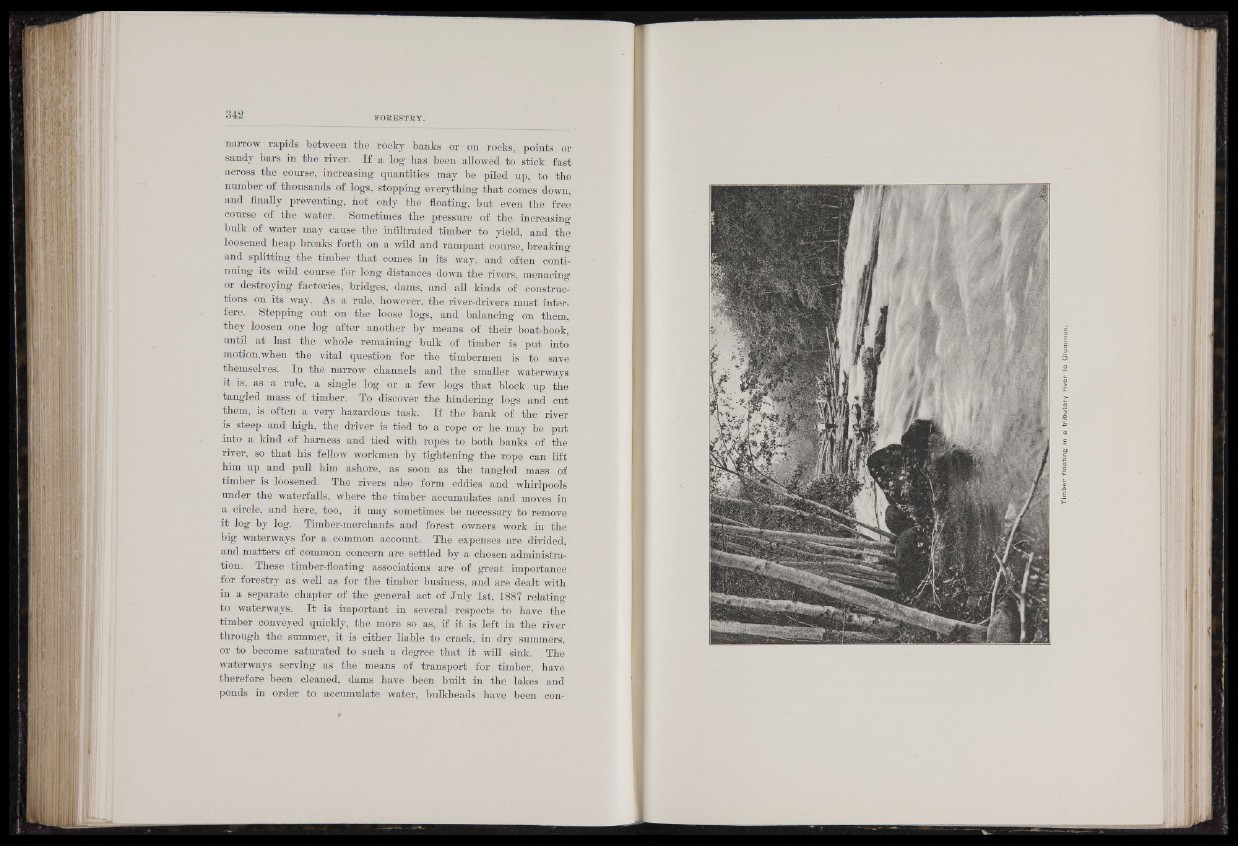
narrow rapids between tbe rocky banks or on rocks, points or
sandy bars in the river. If a log has been allowed to stick fast
across the course, increasing quantities may be piled up, to the
number of thousands of logs, stopping everything that comes down,
and finally preventing, hot only the floating, but even the free
course of the water. Sometimes the pressure of the increasing
bulk of . water may cause the infiltrated timber to yield, and the
loosened heap breaks forth on a wild and rampant course, breaking
and splitting the timber that comes in its way, and often continuing
its wild course for long distances down the rivers, menacing
or destroying factories, bridges, dams, and all kinds of constructions
on its way. As a rule, however, the river-drivers must interfere..
- Stepping out on1 the loose logs, and balancing on them,
they loosen one log after another by means of their boat-hook,
until at last the whole remaining bulk of timber is put into
motion,when the vital question for the timbermen is to save
themselves. In the narrow channels and the smaller waterways
it is, as a rule, a single log or a few logs that block up the
tangled mass of timber. To discover the hindering logs and cut
them,, is often a very hazardous task. If the bank of the river
is steep and high, the driver is tied to a rope or he may be put
into a kind of harness and tied with ropes to both banks of the
river, so that his fellow workmen by tightening the rope can lift
him up and pull him ashore, as soon as the tangled mass of
timber is loosened. The rivers also form eddies and whirlpools
under the waterfalls, where the timber accumulates and moves in
a circle, and here, too, it may sometimes be necessary to remove
it log by log. Timber-merchants and forest owners work in the
big waterways for a common account. The expenses are divided,
and matters of common concern are settled by a chosen administra,-
tipn. These timber-floating associations are of great importance
for forestry as well as for the timber business, and are dealt with
in a separate chapter of the general act of July 1st, 1887 relating
to waterways. I t is important in several respects to have the
timber conveyed quickly, the more so as, if it is left in the river
through the summer, it is either liable to crack, in dry summers,
or to become saturated to such a degree that it will sink. The
waterways serving as the means of transport for timber, have
therefore been cleaned, dams have been built in the lakes and
ponds in order to accumulate water, bulkheads have been con